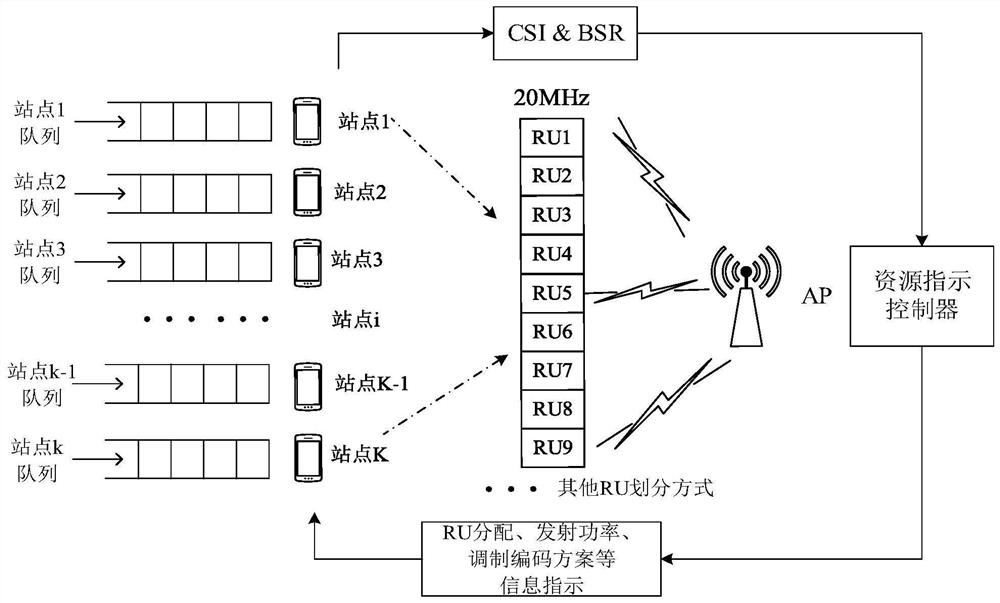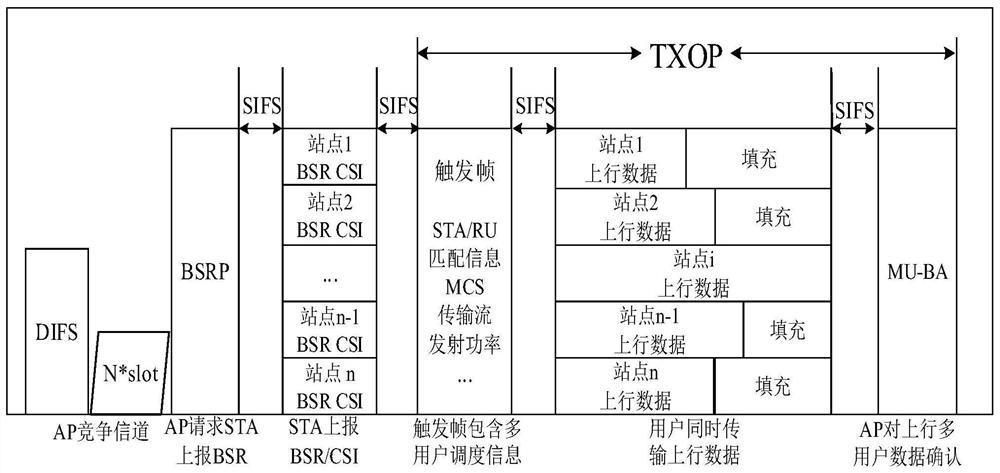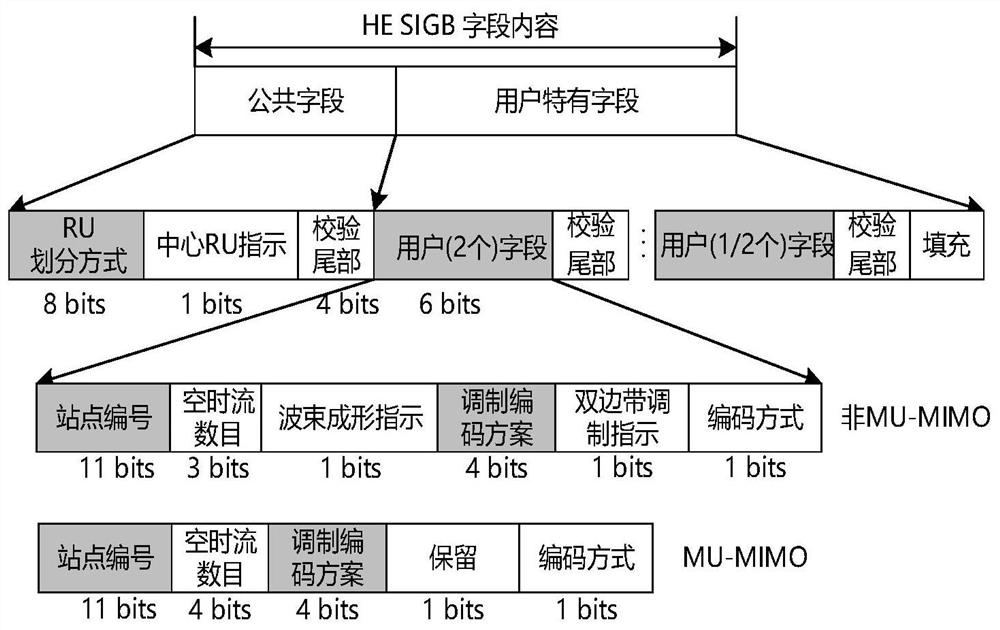A Resource Allocation Method Based on Transmission Delay
A technology of transmission delay and resource allocation, which is applied in the field of user group scheduling and resource allocation based on transmission delay, can solve the problems of reduced communication efficiency and variable size of wireless local area network, and achieves enhanced channel utilization, guaranteed stability, and channel utilization. The effect of rate increase
- Summary
- Abstract
- Description
- Claims
- Application Information
AI Technical Summary
Problems solved by technology
Method used
Image
Examples
Embodiment Construction
[0021] The following will clearly and completely describe the technical solutions in the embodiments of the present invention with reference to the accompanying drawings in the embodiments of the present invention. Obviously, the described embodiments are only some, not all, embodiments of the present invention. Based on the embodiments of the present invention, all other embodiments obtained by persons of ordinary skill in the art without making creative efforts belong to the protection scope of the present invention.
[0022] figure 1 给出了本发明实施例所采用的系统模型图,如 figure 1 所示,假设本实施例的系统模型是上行传输链路模型,上行传输链路模型为BSS内有K个站点即用户,假设信道总带宽B划分为N个RU,每个子信道n∈{1,2,...,N}的带宽为W,且有W=B / N,802.11ax为了使调度多用户传输时更加灵活而支持不同大小RU的组合划分,设每个RU由S个子载波组成,由于不同大小RU里导频子载波数量不一致,所以用于传数据的子载波也不一样;假设信道带宽为20MHz情况下,分为大小相等的9个RU供站点接入进行上行传输,站点通过BSRP帧上报CSI和BSR信息,AP通过资源分配控制器进行资源调度和分配之后将信息下发给站点,站点在对应的RU上发送上行数据。
[0023] figure 2 是本发明实施例中所采用的OFDMA调度接入的上行多用户传输过程图,其传输过程主要包括:
[0024] AP竞争接入信道、STA上报BSR和CSI、AP使用Trigger帧调度UL多用户传输、AP回复MBA帧进...
PUM
 Login to View More
Login to View More Abstract
Description
Claims
Application Information
 Login to View More
Login to View More - R&D
- Intellectual Property
- Life Sciences
- Materials
- Tech Scout
- Unparalleled Data Quality
- Higher Quality Content
- 60% Fewer Hallucinations
Browse by: Latest US Patents, China's latest patents, Technical Efficacy Thesaurus, Application Domain, Technology Topic, Popular Technical Reports.
© 2025 PatSnap. All rights reserved.Legal|Privacy policy|Modern Slavery Act Transparency Statement|Sitemap|About US| Contact US: help@patsnap.com



